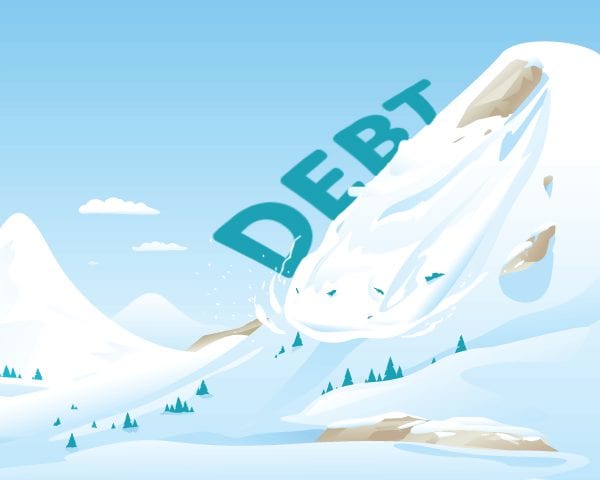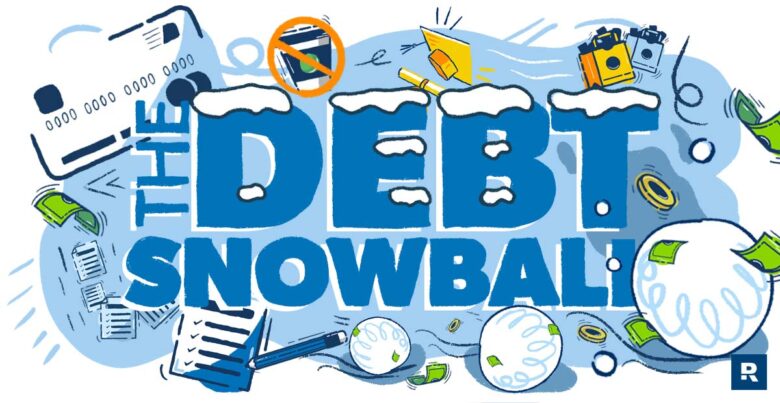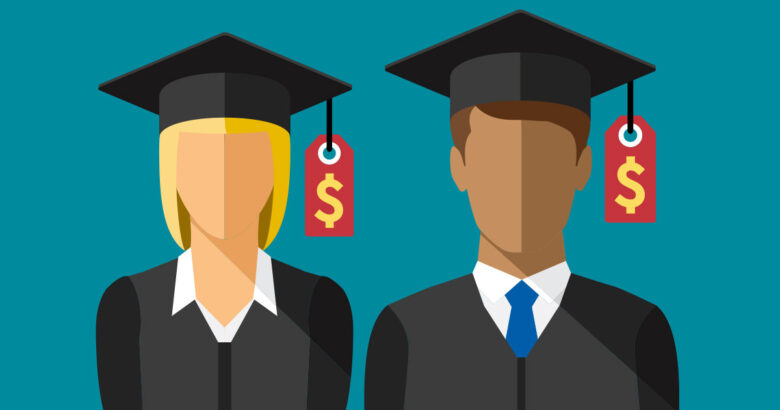Student loan debt is one of the biggest factors in how financially stable you feel and what bit purchases (house, car, retirement) are available to you. Getting them paid off is an achievement that not only gets that weight off your shoulders but also goes a long way towards giving you and your family the life you want to have.
If you feel like you’re drowning in student loan debt, the first step is to take stock of how much debt you really have. Start by using a debt snowball calculator so that you have a complete understanding of your finances. From there, you’ll need to decide on a debt payment strategy that creates a path to becoming debt-free.
But which method is the best for paying off student loans? We’ve broken down the two most popular methods below: The debt snowball and the debt avalanche so that you can determine which will work best to get you out of debt as quickly as possible.
How the debt avalanche method works?

The debt avalanche method focuses on paying off the loan with the highest interest rate first while making minimum payments on the rest.
Say, for example, you have three student loans:
$10,000 with a 7.2% interest rate
$6,000 with a 6.3% interest rate
$9,700 with a 3.7% interest rate
Using the avalanche method, you’d make minimum payments on the 6.3% and 3.7% loans while making additional payments on the 7.2% loan until it’s paid off. Once you’ve eliminated that loan, you’d put the money you were paying on the 7.2% to the 6.3% while still making minimum payments on the 3.7% loan. Once the 6.3% loan is paid in full, all the money that went towards the other loans gets put towards getting rid of your 3.7% loan.
The debt avalanche method works well because it helps reduce the amount of interest you’ll pay over time. Consequently, you’ll end up paying your loans off faster. It has a great benefit of the small cost which is a major plus for most people.
It is all about paying the smallest percentage of interest which is achieved by tackling your biggest debt first. Of course, you need to pour big amounts of money towards it, but it pays off in the end. Sometimes it’s hard to tackle even the main debt, so dealing with less interest should be a priority. So, if your goal is to get the debt off your back the fastest way you can, this is the way to go.
The downside is that the avalanche method is a long process that you’ll need to stay disciplined with. If you need to actually “see” progress, you’ll probably get demotivated quickly. Getting your student loans to disappear is a goal everyone wants to have off their back as soon as possible.
But with this approach, you’ll have a feeling as if nothing happens despite your massive investments towards it. The thing is that if your highest debt is also the one carrying the biggest interest you’ll feel like you’re in a limbo where nothing happens.
How the debt snowball method works?

The debt snowball method works differently from the avalanche method because it focuses on the total amount of each loan instead of their interest rates. Using the snowball method means paying off the lowest loan first regardless of its interest rate and moving on to the next lowest loan as you go.
Using the example above, we’ll show you the difference in how the snowball method works. Once again, you’ve got three outstanding student loans:
$10,000 with a 7.2% interest rate
$6,000 with a 6.3% interest rate
$9,700 with a 3.7% interest rate
The snowball method would have you focus on paying off the $6,000 loan first. Once that’s paid off, you’d move onto the $9,700 loan, and finally, the $10,000 loan. The strategy behind this is to give you the chance to see significant progress and become motivated to keep going. If you can’t wrap your head about it, worry not as websites such as Credello offer amazing snowball debt calculator which could be precisely what you need.
The snowball method is excellent for those who can get distracted or unmotivated easily if they don’t see quick wins. Tackling money issues is never easy. Some people are so afraid of it, that they spend time doing nothing. The worst part is that many students end their schooling with multiple debts.
So, at times the situation might look grim to the point that it looks unsolvable. This is why you need to make the debt snowball your primary strategy. If you apply it the right way you’ll see your situation resolve faster than you imagined it. Start with the smallest of debts, and wipe it clean.
Once you do this for the first tie the feeling of accomplishment will be immeasurable. With the first obstacle out of the way, you’ll feel like nothing can stop you, and you’ll take on the next debt head-on. The goal should be to make a few small victories win the entire war for you.
The downside to this is that you will end up paying more over time in interest but will still pay less than having no strategy at all. This might pose an issue for you if math is your strong suit. Financially, this method is not too wise, as with time interests can pile up. While you’re preoccupied with sorting out smaller debts, the big one will rake in large interests.
So, while you’ll be lying down on the satisfaction of accomplishments, the money to be paid will wait and will grow. With this approach, you’ll end up paying more, but the feeling of satisfaction you’ll have when you start could be enough to carry you through the whole hardship of repaying your student debt.
Which strategy should you use for student loans?

The best method for paying off your student loans is the one you can stick to. Both methods may seem appealing, but consider what motivates you and how you typically like to achieve goals. Yes, in the end, it all comes down to your personality, preferences, and above all else the amount of income you will generate in the years after you finish college.
The debt avalanche method is great for those who focus on long-term benefits and don’t need constant reassurance to keep them going.
The debt snowball method is perfect for those who need small wins to help keep them motivated and who do best when feeling like success (however small) is being achieved quickly.
There is no single right way to pay off debt for everyone, so don’t feel like you “should” use one method over the other. There are two proffered methods for a reason. Not all people can adjust to one approach. Stick with your intuition and start with the debt strategy that feels like it would work best for you.
Yes, we’ll repeat it once again – in the end, it all comes down to you. Remember that you can always switch your strategy if it doesn’t work the way you hoped. While this is an option, there’s also a certain satisfaction in getting things done with a single approach you picked first.
Above all, remember that becoming debt-free is a process that takes time and is rarely linear. If you make mistakes, simply pick yourself up and keep going. The longer you stay dedicated to achieving the goal of paying off your student loans, the better off you’ll be. Real life begins once student loans are history.


